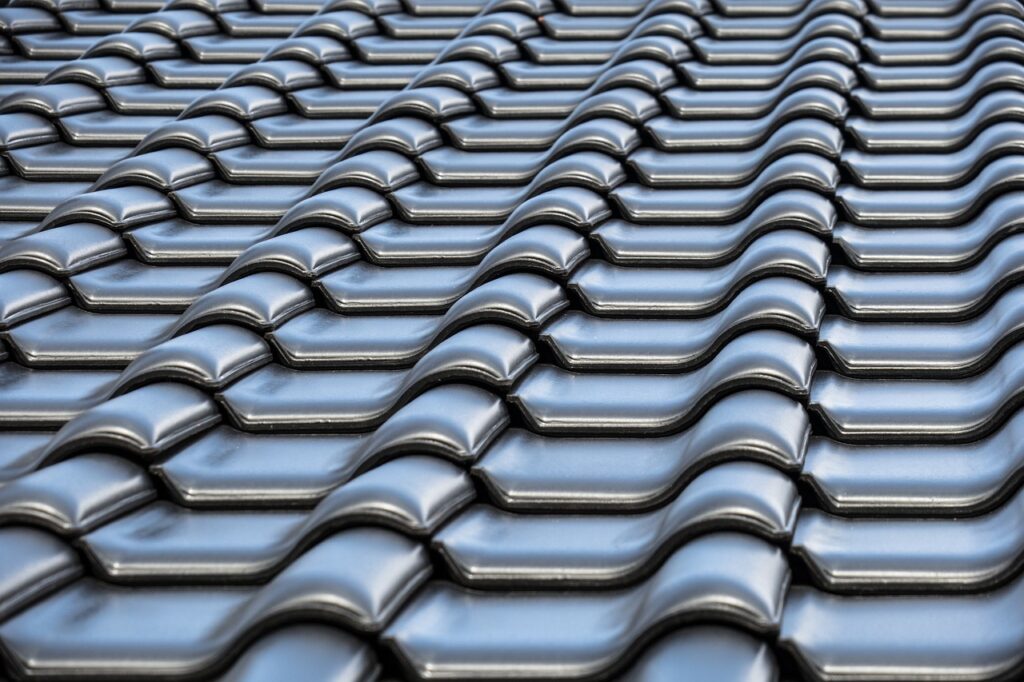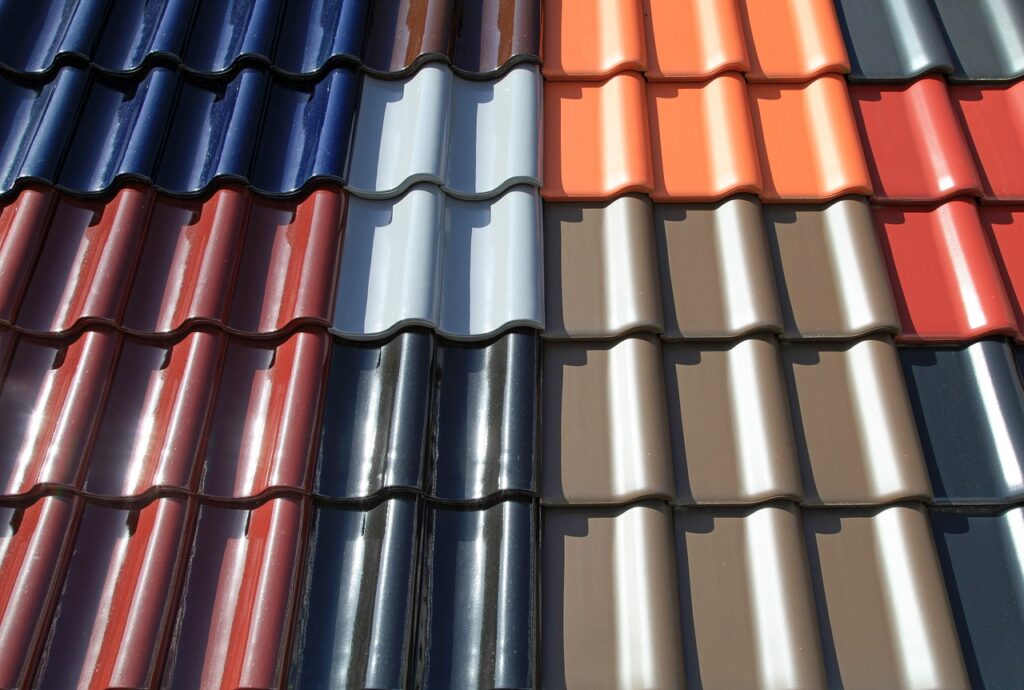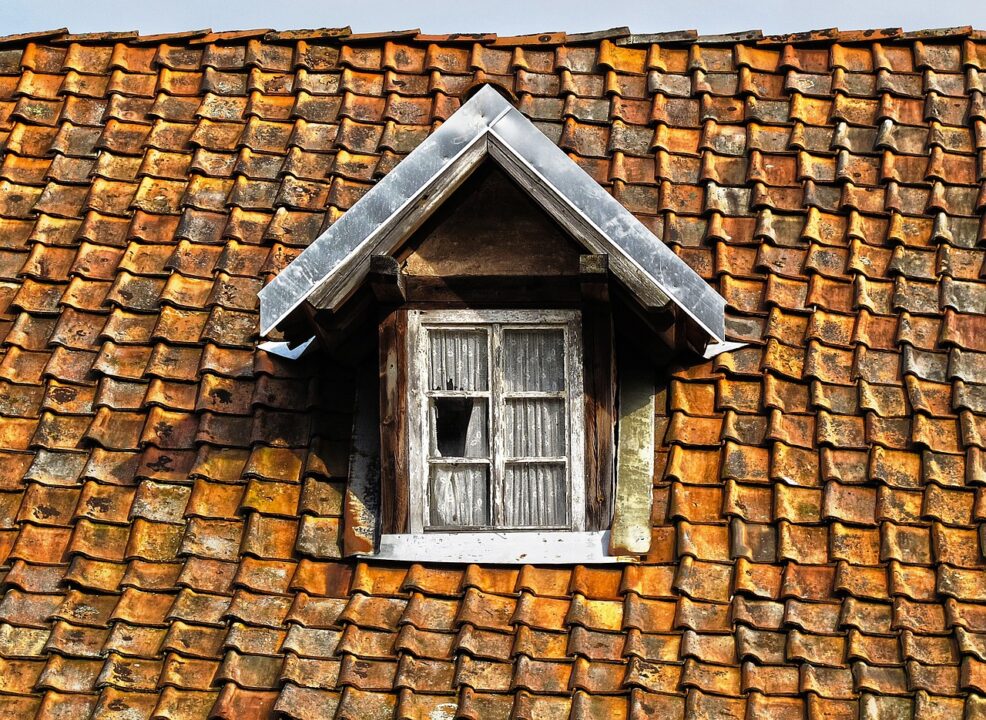Roofing is one of the important things to consider when building a house. When choosing the roofing tiles types to be used for your house, you want to make sure that the roofing styles you choose are the best for your house.
Aside from this, you look at the cost of the roofing tiles if they meet your budget.
Roofing tiles are a type of roofing type that we have. People who want roofing styles that are unique and different from the common and regular styles of roofing will prefer roofing tile.
Shingle roofs are not condemned; they are very good but roof tiles are simply stylish and give the house a more beautiful look.
There are many types of roofing tiles types some of which you may not know. This is why, in this article, we will be looking at some of the roofing tiles that we have.
If you are thinking of the roofing tiles types to choose for your house, you need to pay attention to this article, as we will be discussing them here.
Unique Roofing Tiles Types

1. Clay Roof Tiles
Clay roof tiles are among the lovely designs of roofing tiles types that we have. These roofing tiles, crafted using a mixture of terracotta clay, aluminum oxide, and silica, usually come in flat shapes.
Their wavy design and interlocking system qualify them as one of the best roofing tile types for flat and sloped roofs.
One of the reasons I consider this roofing tile an excellent option is because of its durability and its ability to withstand strong winds and fire.
Those are excellent features for house roofing, which means that you can conveniently sleep with your two eyes closed even during a heavy wind, knowing that your roof will not get blown away.
In addition to their durability, they can maintain their shape and they create watertight seals that last for a long time. What this means is that the insulation, roof lighting, and treatment for mold and fungi will be reduced.
The installation process of clay roof tiles is also simple, as they require few nails and less cement. The only setback that clay roof tiles may have is their inability to hold heavy hail and snow.
However, there is a remedy to this: fillers and enamel glazing can be added in appropriate quantities to increase their impact resistance.
Alternatively, using a vapor barrier below the tiles to protect them from water damage also works perfectly.
Advantages of Clay roof tiles
- Clay roof tiles have great resistance to fire, wind, and fungal issues.
- One of their excellent features also includes their simple interlocking feature and their ability to last for a long period of time.
- They promote sustainability as they are made with environmentally friendly and recyclable products.
- They are versatile, as they can be used for different types of buildings.
- They are the best at reducing house heat and increasing ventilation in the house.
Disadvantages of clay roof tiles
- They are costly and not easy to replace
- They are not very easy to maintain, and maintaining them is demanding.
- They are fragile so they cannot withstand heavy weight, as they may easily break when they bear heavy weight.
- Tile profiles and colors are only available in limited options.
2. Plastic Roof Tiles
Plastic roof tiles are made using recycled polymers. They are fragile but to prevent them from getting easily broken, extra latex coats are added to them.
They are easily adaptable roofing tile types for abstract good shapes and multi-layer roofs because of their lightweight and flexible features.
Fixing them is also easy, as they can be directly embedded in roofing cement. However, plastic roof tiles may not be the best roofing tiles types for houses in areas that are very hot and sunny because they are highly flammable and may melt from being exposed to heat.
This is why roof vents are usually installed when plastic roof tiles are used so that they can keep them cooler. Another alternative is to add powder coating or paint to enhance their moisture resistance.
Advantages of plastic roof tiles
- They can be crafted for different designs and shapes of roof
- They are not heavy and they are easy to install.
- They have high resistance to water and fungi.
Disadvantages of Plastic roof tiles
- Their sound control and wind control abilities are very limited.
- They can easily melt when exposed to hot weather or used in tropical areas so they may not be the best tile type for houses in some regions.
- They can easily break and they have low impact resistance.
3. Metal Roof Tiles
Another great option for roofing tiles type that we have is metal roof tile. Metal roof tiles are curved steel that are crafted from steel, aluminum, or copper and are often coated with zinc or powder to make them last longer.
They are not big or heavy; this lightweight feature that they possess is what makes it very easy for them to get fixed to multilayered roofs or roof pitches.
One of the excellent features of metal roof tiles is that they do not get easily cracked and are easy to maintain. In addition to these features, they are also durable and they effectively offer great resistance against the sun and snow.
Heavy rain can make them susceptible to fungal growth; adding enamel to them can help restore them.
Metal roof tiles are excellent roof style types for your house; however, they need thicker foam and batt insulation for sound control.
This deformity can occur in humid regions, causing water pooling and leakage. To ensure that this is prevented, grease must be added to the roof to keep it dry and functional.
Advantages of metal roof tiles
- They have a great ability for heat retention and
- They are light and easy to fix.
- They are very strong against the sun, warps, and snow.
- The labor cost for this design of roof style is affordable
Disadvantages of metal roof tiles
- Their sound control and impact resistance are very poor.
- They are easily susceptible to denting and deformation.
- They also get easily exposed to rust and corrosion.
- They require constant maintenance and may not last for long.
4. Concrete Roof Tiles

Concrete roof tiles are among the types of roof styles that are solid. They have a tubular shape and they are made from cement with a plastic coating and a curved design.
They have a waterproofing layer that is responsible for water damage resistance, which makes them ideal for high or gentle slopes. They are also highly durable.
When it comes to fire safety, these roofing tiles are very impressive. They have a class A fire rating, which helps reduce the consumption of energy. Extensive insulation or barriers might as well not be needed because they do not expand or contract much.
But in humid areas, the color of concrete tiles may fade, causing them to lose their appealing features so it’s advisable for these types of roofs to be used in temperate regions.
Advantages of concrete roof tiles
- They last longer and they are not hard to maintain
- They have excellent ability to resist fire, heat, and snow
- Their installation cost is affordable
- They are very strong.
Disadvantages of concrete roof tiles
- They are heavy and their installation process may pose a bit of difficulty
- Their moisture and leakage control are very poor
- They are easily exposed to weathering and their colors may get eroded.
5. Ceramic roof Tiles
This is another great choice of roofing tiles types. They are made using natural white clay. They usually have a glossy enamel coat. They are very durable and can withstand harsh weather conditions.
They can save you money on air conditioning because they usually reflect more UV light. They are flexible and can be used on steep and gentle slopes. They are also responsible for fungal growth and discoloration.
A dehumidifier or vapor barrier should be added to them to prevent them from bulging and leaking.
Advantages of ceramic roof tiles
- They are very flexible, as they can fit different roof shapes and designs
- They are great for their resistance to fungus and different climates
- They are not costly
Disadvantages of ceramic roof tiles
- They may eventually get exposed to bulging and warping
- Their porous nature makes them easily susceptible to damage
6. Rubber Tiles
Rubber roof tiles are roofing tiles types made from recycled polymer and they include wood or slate to enhance their durability.
Their flexible nature makes them easily adaptable to different designs of roofs and slopes. They are not heavy, which allows them to be used on older rafters.
Additionally, rubber roof tiles are great for moisture and heat management. The rain may, however, make them warp but they can be adjusted with plungers or rakes.
Alternatively, roofing felt can be added to them to reduce their risk of getting exposed to leakage.
One other important thing to note about rubber roof tiles is that the surface needs to be properly treated before they are installed, as they may emit an unpleasant odor.
They are not the best roof tiles in dry regions or areas very close to wood because of their low fire rating.
Advantages of rubber roof tiles
- They are made with eco-friendly materials
- They have high resistance to rain, strong wind, and snow
- They are lightweight and easy to install
Disadvantages of rubber roof tiles
- They may get exposed to warping in high-moisture conditions
- They are easily susceptible to fire damage
- They may experience staining and discoloration over time.
Conclusion
Roofing tiles types add an outstanding feature to a building. They are the best roofing options for people who are looking for the best roof style for their house.
If you want something outside the ordinary with regular roofs, choosing roofing tiles might be the perfect choice for you.



